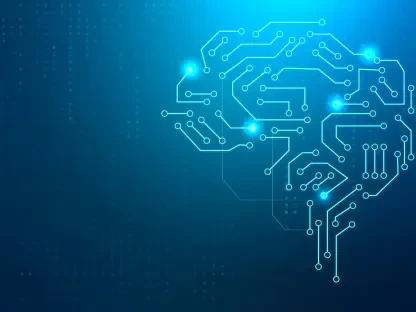5 mobile app development trends for the future
The answer is by gaining a deeper understanding of the trends reshaping the current mobile app development landscape. From ordering groceries to connecting with clients, mobile applications play a pivotal role in thriving in today’s fast-paced environments.
Today’s powerful devices overshadow their predecessors by effectively eliminating previous storage and processing constraints, making the possibility of progress plentiful. With eight million apps competing for success acroSince the invention of the first mobile phone in the 1970s, mobile app development has evolved to become an integral aspect of thriving in the modern world. With no impending signs of the waves of change crashing, technology has advanced to pave the way for artificial intelligence (AI), virtual and augmented reality (AR/VR) as well as blockchain—influencing the industry’s course forward.
From rudimentary iterations that only displayed basic input information to the proactive provision of user data, mobile apps have come a long way in positioning companies like yours to unlock greater levels of business success. The question is: How can you kick it up a notch?
ss both Android and iOS systems, it’s essential to be equipped with expertise to elevate development efforts.
Embracing the Power of 5G
As an exponentially faster option for 4G connectivity, fifth-generation (5G) wireless technology has been revamping businesses across various industries since 2021. With an operating speed 100 times quicker than most existing networks, 5G enables users to transfer information in milliseconds—reducing latency issues and boosting user experiences and connectivity.
With theoretical download speeds of up to 20 Gbps, 5G networks can drive real-time communication, smooth data transitions, and robustly responsive apps. This capability is a ground-breaking catalyst for more interactive multimedia experiences through highly connected devices.
In fact, according to GSMA, it is expected that 5G connections will skyrocket to over 1.7 billion by 2025, positively impacting operational speeds, capacity, and connectivity. 5G technology use cases range across a myriad of applications that maintain quality and lessen costs. This advanced technology empowers developers to break the barriers of creativity and innovation—from powering an entire healthcare ecosystem to immersive AR/VR applications.
Shifting Reality with AR & VR
Following the proliferation of augmented reality (AR) and virtual reality (VR) in the gaming world, these technologies are rapidly becoming integral to success in mobile app development. By leveraging the power of AR, the real estate sector is able to propel its approach to app development—which led to the rising popularity of virtual at-home walk-throughs.
The e-commerce sector has also experienced more convenience through AR/VR capabilities—where customers are more prone to purchasing if they’ve experienced the product with AR technologies. Big corporations also use this technology to showcase tech features, such as displaying how certain hardware components function in a digital manner.
As more businesses embark on this paradigm shift in digital space interaction, users are experiencing more immersive and interaction engagement. The process of establishing these applications requires a meticulous blend of virtual and real-world interactions that push the boundaries of what your company can offer. Conquering the intricacies of VR and AR app development empowers enterprises to blur the lines between physical and digital worlds—and bringing a bounty of opportunities to life.
Putting the intelligence in AI
Alongside this revolutionary technology, mobile app developers are finding transformative ways to leverage artificial intelligence (AI). From using facial and speech recognition to enhance safety features to providing useful analytics to learn behavior patterns, AI is turning applications into more intelligent, responsive, and personalized tools that users cannot live without.The magic of AI lies in the simulation of human intelligence processes in software or computer systems to drive operations. By learning from previous experiences, this technology is able to adjust new inputs and power revolutionary capabilities like natural language processing and machine vision. The conceptualization, design, programming, and development of AI-powered features advance applications through next-gen functionality—further transforming technological innovations, like IoT and wearables.
Catapulting Convenience with Wearables
From phone call voice activation to helpful pedometers, wearables—like watches and smart glasses, are catalyzing change in the mobile app development landscape. The potential of this technology has surpassed the barriers of app development and catapulted consumers into a not-so-distant future of tech possibilities.Whether it is worn as an accessory or serves as an implant in the user’s body, the fusion between tech and everyday life has made it easier for companies to gather and monitor personal and biometric data through smart sensors and microchips. As a result, wearables development is closely linked with the growth of mobile networks and high-speed data transmissions.With the wearable tech market estimated to be valued at 265.5 billion by 2026, the demand for smarter devices is surging. This is because wearables are not just about technology. They’re about infusing consumer lifestyles with digital convenience—especially in the fitness and healthcare sectors. Through its effective use of built-in sensors, this technology can track physical activities, monitor health metrics, and even predict patterns using AI. This prompts app developers to pull greater focus toward propelling precise data handling and user privacy.
Patching Protection Vulnerabilities
The rise in online activity has resulted in an influx of personal user information—skyrocketing concerns around consumer security. With 63% of open-source app components having known protection vulnerabilities, these fears are not unfounded.To put the minds’ of security teams at ease, protection professionals are turning to biometric authentication—using eye, facial, fingerprint, and voice recognition for verification—as the primary line of defense against fraud actors. Additionally, this approach streamlines log in processes and enhances user experiences.
What is the future of mobile app development?
With Americans averaging 4 hours and 25 minutes of daily screen time on their smartphones, the mobile market has become extremely competitive—making apps more accessible than ever before. By adopting emerging and game-changing trends, developers are better positioned to capitalize on the power each trend offers, while aligning to audience expectations.
Today’s users require seamless, innovative, and more innovative apps. Meeting these needs requires your teams to deeply understand how the landscape is shifting as modernity ushers in a new age of technological opportunities. By doing so, developers have a firmer grasp of how they can empower users with more seamless access to information, services, and products—by removing time-bound and geographical barriers.
Developing next-generation applications enables businesses to expand into new markets, boost operational efficiency, and boost brand awareness—while keeping companies of all sizes competitive and innovative in the ever-evolving digital era.









